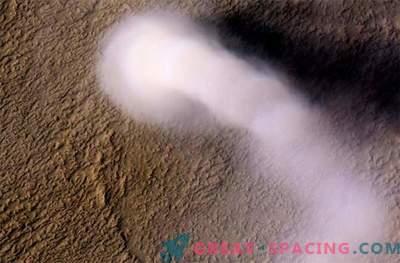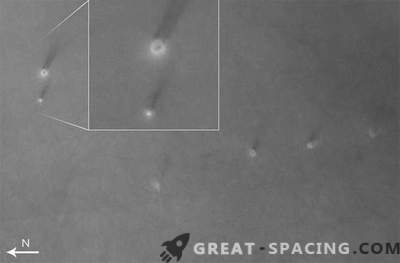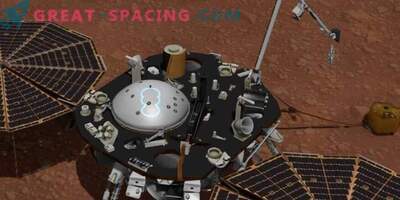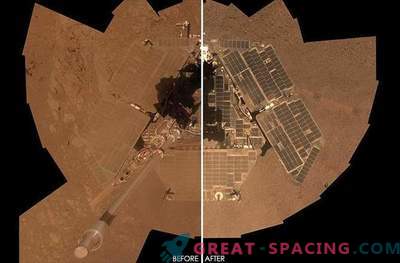
During the experiments on the dried bottom of Lake California, seismologists were able to detect dust whirlwinds racing across a barren surface. Thus, the seismic signal of these tiny atmospheric phenomena was captured for the first time.
Now researchers, whose work has been published in the journal Bulletin of the Seismological Society of America, expect to track the seismic signals of tiny tornadoes on Mars.
Dust tornadoes are fairly common on Earth; they appear on open plains and deserts, and seem to have a life of their own. Being born on a thin heated layer of the Earth, tiny whirlwinds of air rush up to cooler layers, creating the impression of a mini-tornado. These vortices can pick up dust and other small particles high into the atmosphere.
Dust eddies are impressive on Earth, but the undisputed king of these formations is Mars. The red planet constantly forms aeolian (windy) processes and in many regions dust whirlwinds are common. Recent studies have shown that Martian dust whirlwinds, which can reach several miles in height, play a key role in the atmospheric transportation of small dust particles from the surface high into the atmosphere. This “dust cycle” can play a key role in the global climate of the planet. In addition, these vortices change the albedo (reflectivity) of the Martian surface, changing the effect of solar heating of the surface of Mars, thereby affecting the temperature in the atmosphere.
Phantom cleaners
Past and current missions of Mars are very familiar with these ghostly phenomena. NASA's Mars rover Spirit often noticed dust tornadoes in its field of scientific research located in the Gusev crater until the connection with the mission was lost in 2010.

NASA's Masrokhod Spirit made this series of dust whirlwinds on the Gusev crater on May 15, 2005. A column of dust was about 34 meters (112 feet) in diameter.
The other rover, Opportunity, located in the area called “Meridiani Planum” owes its long-lasting mission to the dust whirlwind - they periodically blow away dust from its solar panels.
NASA's Mars Reconnaissance Orbiter spacecraft, orbiting Mars, is also very familiar with them. A swarm of dust vortices forms dark channels on the bright plains of Mars. Sometimes these tornadoes eclipse these plains with dusty mud.
"On Earth, dust eddies tend to cause only minor annoyances and are a curious meteorological phenomenon," says Ralph Lorenz of John Hopkins University in Baltimore, Maryland. "On Mars, they are the main sources of dust, which play a key role in the climate, as well as in the operation of the solar batteries of the rovers."
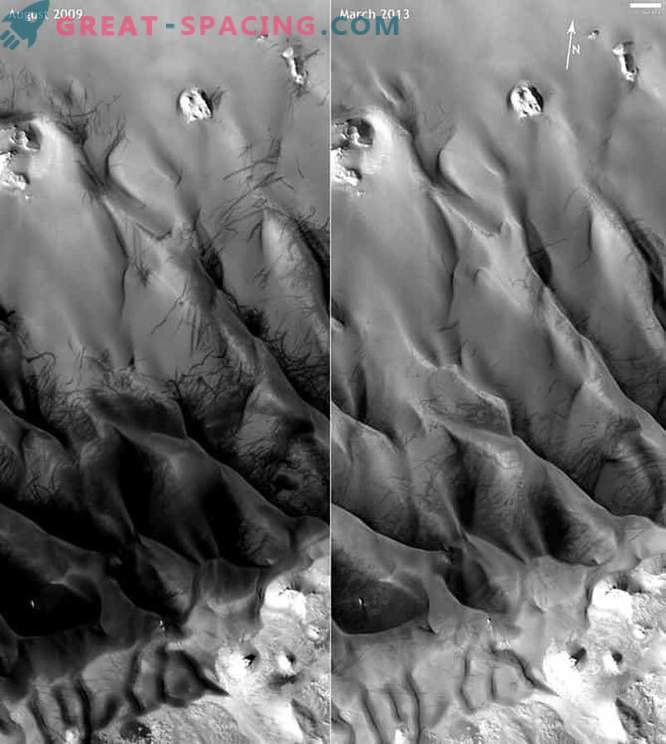
Two photos of the same area, taken with a difference of 4 years. Dark lines are traces of dust whirlwinds.
So, we know that the Martian wind is capable of producing some of the most impressive dust tornadoes in the solar system. But in the end, this is a random event.
Seismic map
It so happened that NASA is launching its next rover, called InSight, next year. InSight will land on Mars to help us form a more complete picture of what lies beneath the regolith layer. The descent vehicle will use a drill for sampling through a layer of soil, presenting to us the first tests of the alien world, taken from a depth of 5 meters. He will also have a seismograph to study the movement inside the planet. Although it is believed that the Red Planet is tectonically dead, Martian earthquakes occur, and this will be our first opportunity to explore them in depth.
Thus, it turns out that InSight can become a detector of dust tornadoes.
During the study of dust tornadoes on Earth, Lorenz and his colleagues placed a seismograph near the complex of the far space communications Goldstone, California. This is a remote area, which is located far from human activity. In the vicinity of the seismograph, the researchers also set up 8 air pressure sensors so that they can correlate the slightest pressure changes with a seismic signal. When a dust whirl is formed, it creates a mini-low-pressure area above the ground — a warm surface causes the air to rise and rotate. Like a skater who stretched out her arms and rotates in place, the rotation of the air forms a whirlwind. Thus, this vortex can be detected by sensors as a “surge” of low pressure circling above the surface.
Using this pressure sensor in combination with a seismograph, the researchers were able to detect 2 different low pressure sources with an interval of 10 minutes. They also recorded seismic vibrations, when the surface was under the influence of a low-pressure region formed by dust vortices.
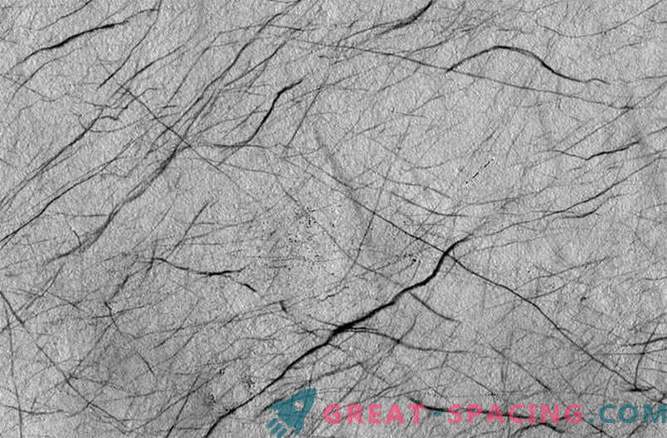
This image shows traces of dust vortices in the Thyles Rupes area on Mars.
It turns out that dust vortices, which are only 10 meters in diameter, can cause a pressure drop equivalent to the movement of a car across the surface of the Earth.
Now researchers, comparing the pressure drops caused by dust vortices, with their seismic activity on Earth, hope that the seismic signals detected by InSight will help identify the passage of Martian dust vortices.
